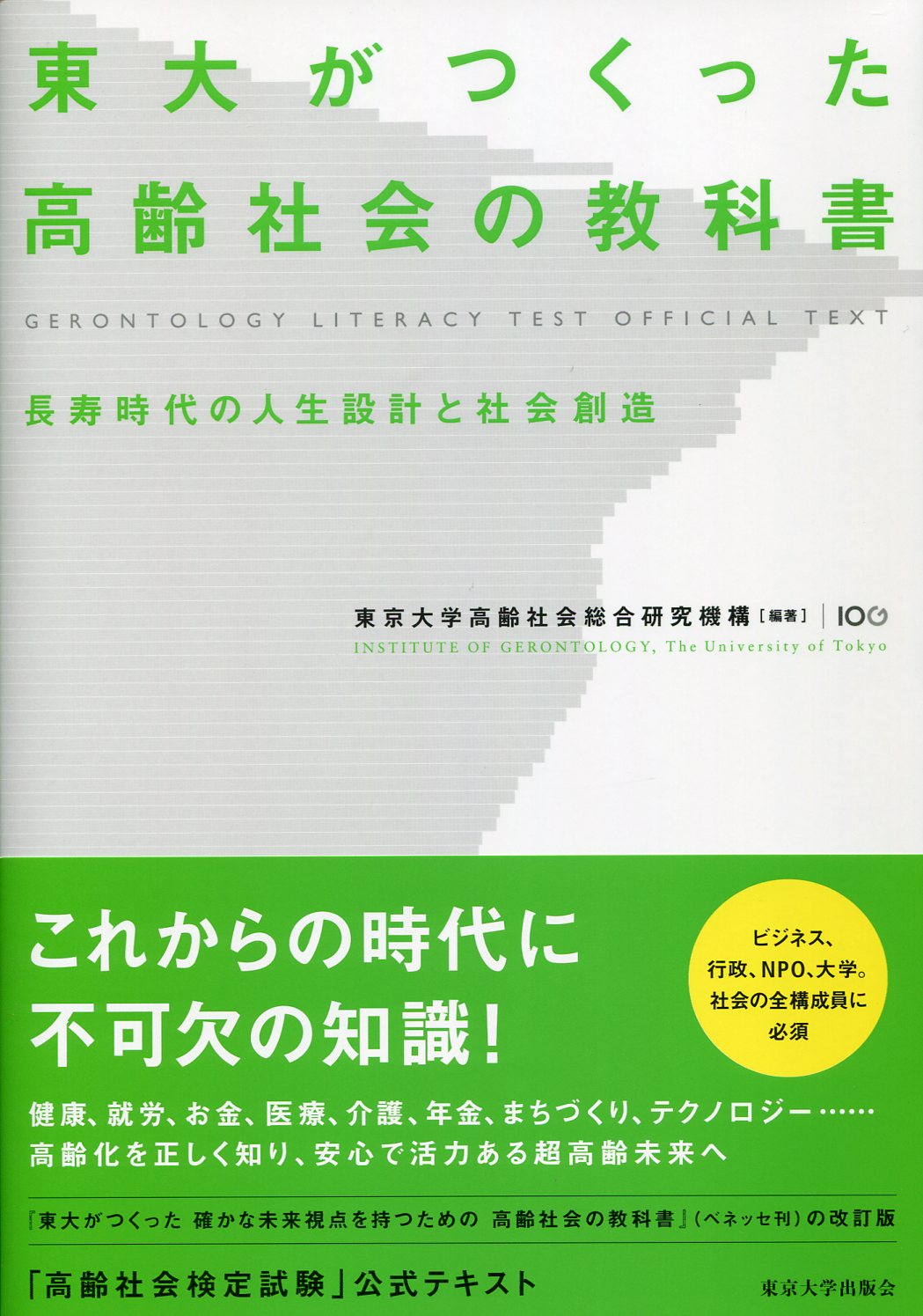
Title
Creative Ageing Cities Place Design with Older People in Asian Cities
Size
216 pages
Language
English
Released
February 08, 2018
ISBN
9781138676725
Published by
Routledge
Book Info
See Book Availability at Library
Japanese Page
Edited and published in 2018, this book is based on the Creative Ageing Cities symposium held in Singapore in 2016. It discusses initiatives that are being implemented in Singapore, Taipei, Seoul, Hong Kong, Shanghai, and Tokyo with regard to the question of how architecture and urban design should respond to the super-aging of society, which will become a serious issue in East Asian cities in the future.
Pro. Otsuki of the University of Tokyo wrote the chapter on Tokyo, entitled “Community design to prevent solitary deaths in super-aged Japan.”
This chapter, first, illustrates the current state of the aging society in Japan, which rapidly skyrocketed to a super-aged status among Asian countries, before going on to explain the “community-based integrated care systems” approach that the country is currently taking.
Next, “Ageing of ‘new towns’ and the fight against shifting demographics” begins with the reality that “New Towns” and other newly developed residential districts are facing a rapid aging of their populations, which have an unusually high number of elderly people. From there, this chapter describes the “Making a neighborhood bit by bit” initiative being implemented in Yūkarigaoka New Town, a privately developed residential district. In typical housing developments, a large number of units are provided as soon as they are sold, which can ultimately fossilize an extremely lopsided population pattern, but this demonstrates that imposing restrictions on the number of units provided in a year can lead to the creation of an area that does not age so quickly.
The following chapter, “Making use of the collective memories of a housing estate in Tokyo,” introduces the potential for a museum on the Akabane-dai housing estate, which was converted from a vacant shop that was slated for demolition, to form a place of belonging for elderly people in the community. The presenters picked through the trash that was thrown away in the process of moving house to collect mementos from the Shōwa era. They then exhibited the mementos in a vacant shop, which they turned into a museum. Elderly residents of the community, guided by “collective memory,” began to stop by the museum to reminisce about old times. Through the small workshops held there, the museum also became a space for child-rearing households to gather, ultimately creating opportunities for inter-generational exchanges. This combination of spatial and social design will be important for future aging societies.
Finally, “Community care and temporary housing for the victims of the Tohoku Earthquake” introduces proposals for community care-oriented temporary housing and projects that are currently being developed by the University of Tokyo Institute of Gerontology (IOG). For the temporary housing that was to be built in the wake of the Great East Japan Earthquake, the IOG proposed community care-oriented housing with the intention of creating an “environment where residents could gently look after each other” to prevent solitary deaths among the elderly. This project was realized in the cities of Kamaishi and Tōno in Iwate Prefecture. By installing wooden decks and roofs in front of the housing units’ entrances, the proposal hoped to develop these front areas into a second living room of sorts. This led to the formation of spaces, called ochakko, where neighbors could interact with each other. This chapter makes the case that using small, practical design techniques such as these to create diverse spaces for elderly people to interact, which are currently garnering attention in the West as “tactical designs,” is important for super-aged societies.
(Written by OTSUKI Toshio, Professor, School of Engineering / 2019)
Table of Contents
Part I: Singapore
1. Reclamation of Urban Voids and the Return of the ‘Kampong Spirit’ in Singapore Public Housing (Keng Hua CHONG)
2. A Case Study in Re-imagining Healthy Communities (Sweet Fun WONG)
Part II: Taipei
3. Regenerating Public Life for Ageing Communities through the Choreography of Place-ballets and the Weaving of Memory Tapestries (Min Jay KANG)
Part III: Seoul
4. Fostering Government-Citizen Collaboration and Inter-generational Cooperation: The Alternative Neighbourhood Regeneration Project in Jangsu, Seoul (Jiyoun KIM and Mihye CHO)
Part IV: Hong Kong
5. Participatory Action Research: Public Space Design by Older People (Jackie Yan Chi KWOK)
6. A Participatory Design Experience with Older People: Case Study of Participatory Design in the HKSKH Tseung Kwan O Aged Care Complex Project (Robert Kin Ming WONG, Crystal Man Chong HO, and Gwyneth Wing Lam CHAN)
Part V: Shanghai
7. New Prototype for Ageing-in-Place in Megacities: An Empirical Study of Shanghai (Dong YAO)
Part VI: Tokyo
8. Community Design to Prevent Dying Alone in Super-Aged Japanese Cities (Toshio OTSUKI)
Conclusion (Mihye CHO and Keng Hua CHONG)



 Find a book
Find a book


 eBook
eBook








